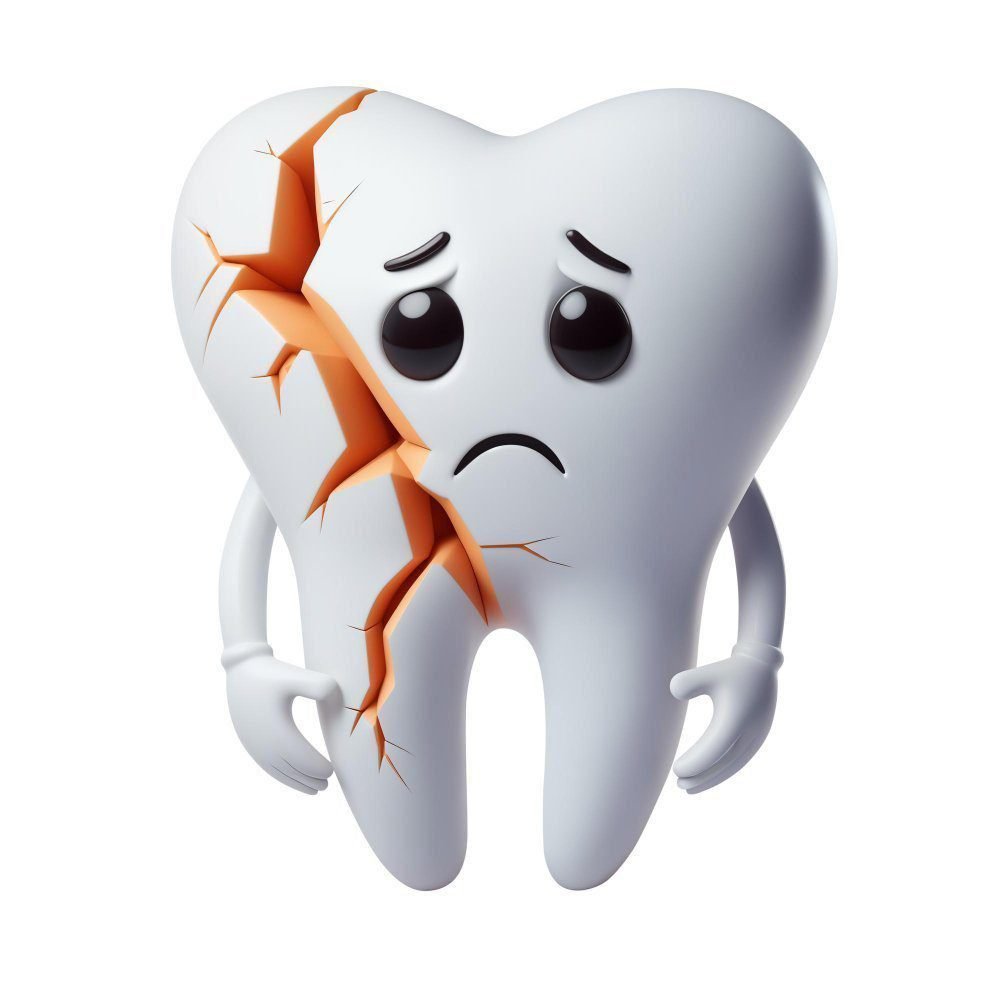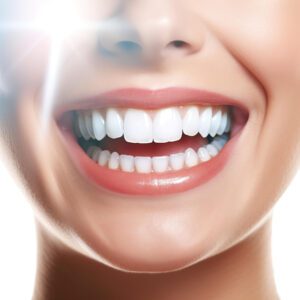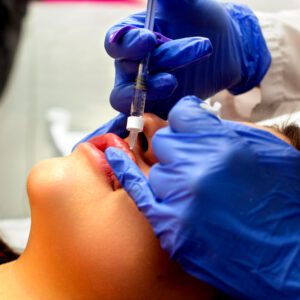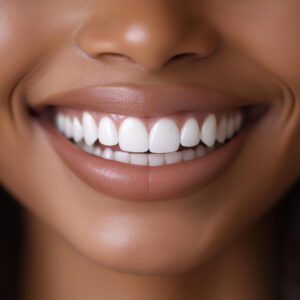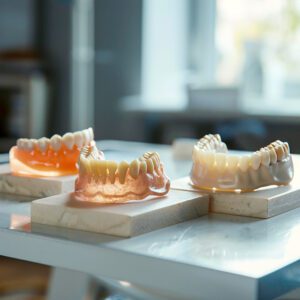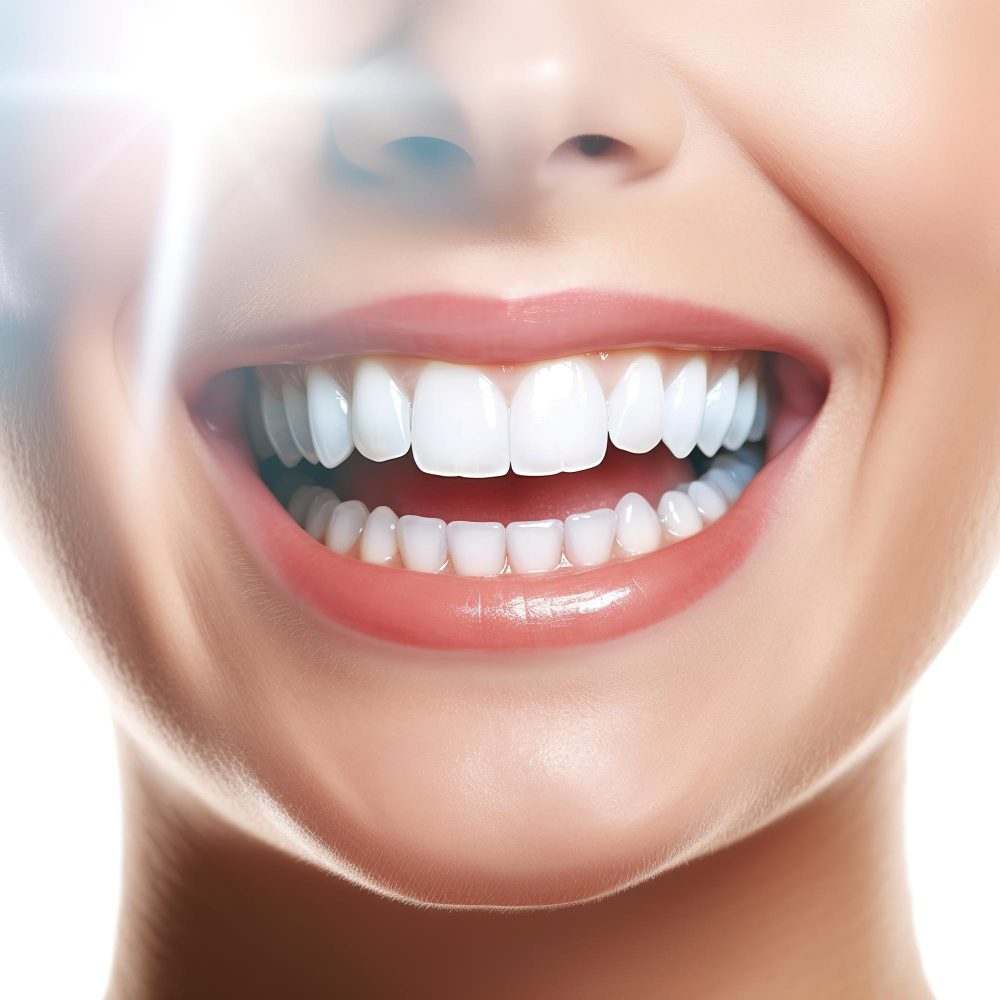What is Dental Bonding?
Dental bonding is a cosmetic dental procedure designed to enhance the appearance of teeth while also addressing various dental health concerns. This treatment involves the application of a tooth-colored resin material to repair or improve the aesthetic appeal of a patient’s teeth. The bonding process is often employed to remedy issues such as chipped, cracked, or discolored teeth, as well as to close gaps between teeth and reshape them to achieve a more consistent smile. Given its versatility, dental bonding is typically regarded as a suitable option for many individuals seeking to improve their dental aesthetics without extensive intervention.
The materials utilized in dental bonding consist primarily of composite resins, which are made from a mixture of plastic and glass particles. These resins are available in a variety of shades, allowing dental professionals to match the bonding material closely to the natural color of the patient’s teeth, thus ensuring a seamless finish. Composite resins not only provide a natural appearance but are also durable and resistant to staining when properly cared for. The application of these materials is a relatively straightforward, minimally invasive process that can often be completed in a single office visit.
While dental bonding is primarily viewed as a cosmetic enhancement, it also serves practical purposes in restoring oral health. For instance, bonding can protect exposed tooth roots due to gum recession and can provide reinforcement for weakened teeth. This dual functionality of dental bonding not only contributes to aesthetics but also plays a significant role in maintaining overall dental integrity. As such, it is an advantageous treatment option for individuals seeking both beauty and functionality in their smiles.
Indications for Dental Bonding
Dental bonding is a versatile cosmetic dental procedure beneficial in various scenarios. Primarily, it is employed to repair chipped or cracked teeth, restoring both function and aesthetic appeal. This treatment involves the application of a tooth-colored composite resin, which adheres seamlessly to the natural enamel. One common example is when a patient experiences a minor fracture due to trauma or wear over time; dental bonding effectively fills the gap, making the tooth appear whole again.
Another prevalent indication for dental bonding is the closure of small gaps between teeth, often referred to as diastema. Patients seeking to improve their smile’s appearance may find this technique particularly appealing, as it provides a quick and cost-effective solution compared to other orthodontic options. The bonding material can be shaped and polished to create a smooth, uniform appearance, enhancing the overall look of the individual’s smile.
Furthermore, dental bonding serves as an ideal procedure for altering the shape or color of teeth, especially for those with discoloration that cannot be resolved through traditional whitening methods. In cases where a tooth is malformed or requires reshaping to achieve better symmetry and aesthetics, dental bonding provides an excellent solution. This treatment is especially suitable for those looking to enhance their smile without undergoing more extensive procedures such as veneers or crowns.
Lastly, dental bonding can be utilized to protect exposed tooth roots due to gum recession. The bonding material can cover the sensitive area, shielding it from temperature fluctuations and reducing discomfort. Overall, dental bonding presents a range of indications, making it a valuable option in restorative and cosmetic dentistry.
The Dental Bonding Procedure: An Overview
Dental bonding is a cosmetic procedure designed to improve the appearance of teeth while addressing various dental issues. The treatment typically involves several well-defined steps, ensuring a seamless experience for patients seeking to enhance their smile. Initially, the dentist begins by assessing the patient’s dental condition and discussing their aesthetic goals. This consultation is crucial, as it allows the dentist to tailor the bonding procedure to meet the individual needs of the patient.
The first step in the bonding procedure involves preparing the tooth surface. The dentist cleans the tooth thoroughly to eliminate any plaque or debris. After cleaning, a gentle etching solution is applied to create a rough texture on the surface, enabling the adhesive to bond effectively with the tooth structure. This preparation phase is vital as it enhances the longevity and effectiveness of the dental bonding.
Next, the dentist carefully applies a tooth-colored resin to the prepared area. This resin is malleable and can be sculpted to match the natural contours of the surrounding teeth. During this application phase, the dentist employs various tools to shape and mold the resin until it achieves the desired appearance. The color of the resin is also matched to the patient’s other teeth for a seamless blend.
Once the resin is applied and formed, the next phase involves curing the material. A special ultraviolet light is used to harden the bonding material, ensuring it adheres securely to the tooth. This curing process generally takes just a few minutes but is critical for the durability of the bond. After the resin has cured, the dentist may make minor adjustments for a perfect bite and polish the surface to achieve a smooth finish. Each step of the dental bonding procedure plays a significant role in ensuring that patients leave the dental office with beautiful and functional teeth.
Benefits of Dental Bonding
Dental bonding is a versatile dental procedure that offers numerous benefits, both aesthetic and functional. One of the primary advantages of dental bonding is its ability to enhance the appearance of teeth effectively. This procedure involves applying a tooth-colored resin material to the surface of a tooth, which can be shaped and polished to match the natural color of the surrounding teeth. As a result, dental bonding can conceal imperfections such as chips, cracks, and discoloration, providing patients with a more aesthetically pleasing smile.
In addition to its cosmetic advantages, dental bonding is known for its quick application process. Unlike other dental procedures, which may require multiple appointments or extensive preparation, dental bonding can typically be completed in a single visit. The entire process usually takes just 30 to 60 minutes per tooth, making it an ideal choice for individuals seeking a swift solution to dental issues. This efficiency saves patients valuable time while still delivering effective results.
Moreover, dental bonding is a cost-effective option when compared to other restorative treatments such as crowns or veneers. The materials used in dental bonding tend to be less expensive, and since the procedure is often completed in one appointment, patients can avoid additional expenses related to multiple visits and follow-up care. This affordability makes dental bonding an attractive choice for those looking to improve their dental aesthetics without overstretching their budgets.
Finally, dental bonding is minimally invasive. The procedure typically requires little to no removal of the original tooth structure, reducing the risk of complications and preserving the integrity of the tooth. This characteristic, combined with its many other benefits, positions dental bonding as a highly appealing dental treatment option for those seeking both aesthetic enhancement and functional improvement in their smiles.
Potential Risks and Considerations
Dental bonding is generally considered a safe procedure, but like any medical treatment, it carries potential risks and side effects that individuals should be aware of before proceeding. Common risks associated with dental bonding include sensitivity to temperature changes, particularly hot and cold foods or beverages. Some patients may experience gum irritation or an allergic reaction to the resin materials used in the bonding process. Although these reactions are rare, it is essential to discuss any known allergies with your dentist before starting treatment.
In terms of longevity, dental bonding typically lasts between three to ten years, depending on factors such as the location of the bonding, the material used, and the patient’s oral hygiene practices. Bonded teeth can be more prone to staining than natural teeth, making it crucial to maintain proper oral hygiene to prolong the life of the bonding material. Regular brushing, flossing, and routine dental check-ups can help maintain the aesthetics and functionality of bonded teeth.
To care for bonded teeth, patients should avoid hard foods, as these can cause the bonding material to chip or break. Additionally, habits such as nail-biting or using teeth as tools can jeopardize the integrity of the bonding. If any discomfort, increased sensitivity, or visible damage occurs, it is advisable to consult a dental professional promptly. A dentist can assess the condition of the bond and determine if repair or replacement is necessary. Overall, understanding these potential risks and considerations is vital for patients to make informed decisions about dental bonding.
FAQs about Dental Bonding
Dental bonding is a common cosmetic dentistry procedure that many patients inquire about. One frequent question pertains to the durability of dental bonding. Generally, the materials utilized in dental bonding, which primarily consist of composite resins, provide a lifespan of about three to ten years. The longevity can vary significantly depending on individual habits such as oral hygiene, diet, and lifestyle choices. Regular dental check-ups can help maintain the integrity of bonded teeth.
Another common query relates to how dental bonding compares to veneers. While both options serve the purpose of improving the aesthetic appearance of teeth, they differ in application and durability. Veneers, typically made from porcelain, cover the entire front surface of the tooth and tend to be more resistant to staining and damage over time. Conversely, dental bonding involves applying a composite resin to repair or enhance the existing tooth structure. It is considered a less invasive procedure, requiring minimal tooth preparation. Thus, patients may choose bonding for subtle corrections, while veneers are preferable for more extensive cosmetic changes.
Patients often wonder about the suitability of dental bonding for different age groups. In fact, dental bonding can be performed on both adults and children. For younger patients, bonding is an effective way to address minor imperfections such as chips or gaps in their teeth. Meanwhile, adults seeking to rectify dental issues like discoloration or damage may also seek bonding. However, it’s important for patients to consult with a qualified dentist to determine whether bonding aligns with their specific dental needs and conditions.
Choosing the Right Dental Clinic
When it comes to dental bonding procedures, selecting an appropriate dental clinic is a critical decision that can significantly influence the quality of care you receive. One of the foremost factors to consider is the qualifications and credentials of the dental professionals. Ensure that the dentists are licensed and have undergone relevant training in cosmetic dentistry, specifically in procedures involving bonding materials. Organizations such as the American Dental Association (ADA) can provide listings of certified practitioners, ensuring you select a clinic that adheres to recognized standards.
Moreover, patient reviews can serve as a valuable resource in your decision-making process. Nowadays, many dental clinics have an online presence, allowing prospective patients to read firsthand accounts of experiences from others. Look for feedback regarding the dentists’ skill, the clinic’s atmosphere, and the staff’s professionalism. Positive reviews can indicate a higher likelihood of satisfactory outcomes, while negative feedback may serve as a warning sign to explore alternatives.
It is also essential to evaluate your comfort level with the dental care professionals at the clinic. Establishing a rapport with your dentist can enhance your overall experience, particularly during procedures such as bonding, which may require a great deal of trust and communication. During your initial consultation, observe how the staff interacts with you and whether they answer your questions comprehensively. Feeling comfortable and valued as a patient can significantly impact the success of your bonding procedure.
Lastly, consider other factors such as the clinic’s location, hours of operation, and the technology they utilize. State-of-the-art facilities equipped with advanced tools may provide superior results in dental bonding. Taking the time to research and select the right dental clinic can lead to improved outcomes and a more positive patient experience overall.
Highlighting Dr. Abdulrahman Öztürk’s Clinic in Istanbul
Located in the vibrant city of Istanbul, Dr. Abdulrahman Öztürk’s clinic represents a premier destination for individuals seeking dental bonding and a variety of other cosmetic dental procedures. Renowned for its state-of-the-art facilities, the clinic establishes a standard of excellence that draws patients from both local and international communities.
Dr. Öztürk, a highly qualified dental professional, brings a wealth of experience to his practice, having undergone rigorous training and education in cosmetic dentistry. His credentials include advanced degrees in dental science, along with numerous certifications in restorative and aesthetic techniques. This exceptional background enables him to provide comprehensive assessments and tailored treatments that meet the unique needs of each patient.
The clinic offers an extensive range of services, with dental bonding being one of the most sought-after. This procedure involves the application of a tooth-colored composite resin to enhance the appearance of teeth, addressing concerns such as chips, gaps, and discolored areas. The extensive consultation process at the clinic allows Dr. Öztürk to assist patients in understanding their aesthetic goals, ensuring that each treatment aligns with their expectations.
What sets Dr. Öztürk’s clinic apart is its commitment to patient care and comfort. The clinic employs the latest technology, ensuring that procedures are both effective and efficient during the treatment journey. Additionally, the warm and welcoming environment, coupled with a highly trained staff, ensures that patients feel at ease from their initial consultation through to the completion of their procedures.
Those considering dental bonding and other cosmetic treatments will find in Dr. Öztürk’s clinic not only a comprehensive range of options but also a dedicated team striving for outstanding results. This reputation for excellence solidifies the clinic’s status as a distinguished choice for dental care in Istanbul.
Conclusion and Next Steps
Dental bonding emerges as a valuable cosmetic dental procedure, offering a host of benefits for individuals seeking to enhance their smiles. Throughout this guide, we have explored the various aspects of dental bonding, including the process, applications, and advantages it provides. The technique is particularly effective for addressing imperfections such as chipped, cracked, or discolored teeth, and can serve as a practical solution for closing gaps between teeth. Moreover, its minimally invasive nature and straightforward application make it an appealing option for many patients.
One of the most significant advantages of dental bonding is its affordability compared to other cosmetic dentistry procedures. Additionally, the material used in bonding is tooth-colored, allowing for a natural aesthetic that blends seamlessly with existing teeth. Patients can typically expect a quick turnaround, with many procedures completed in a single visit, bringing immediate improvement to their dental appearance. Importantly, identifying a skilled dentist is crucial to achieving optimal results, emphasizing the necessity of consulting a professional who specializes in cosmetic dentistry.
As you consider enhancing your smile, it is advisable to schedule a consultation with a reputable dental clinic. Professional assessments can provide personalized insights, ensuring that dental bonding aligns with your specific needs and aesthetic goals. Notable clinics, such as Dr. Öztürk’s, are well-equipped to offer expert guidance and care, helping you navigate the decision-making process with confidence.
In summary, dental bonding presents an accessible path toward smile enhancement, combining effectiveness with convenience. By seeking the expertise of qualified dental professionals, you can fully realize the potential of this cosmetic procedure. Taking the next steps towards consulting with a dental expert will be essential in your journey to achieving a more confident smile.

